Family

 My niece, Chantel Balcerzak has been having a wonderful year. Her daughter, Siara Kirk and Siara’s husband, Chris bought that house next door to Chantel and her husband, Dave earlier this year. They quickly renovated the house, because they were having a baby boy named Nathaniel Andrew Kirk on January 15, 2024. It has been so nice for Chantel and Dave to have them living right next door, because Chantel and Siara are very close. Now that baby Nathaniel is a couple of months old, Siara is getting ready to go back to work, he will be spending his days with his grandma and his daddy. While it will be really hard on Siara, she knows that her sweet boy will be is good hands and having fun. I have always thought it would be cool to have my grandchildren live within walking distance of me. Of course, that doesn’t always work out, but the most important thing is to be close to them in hearts, if not in distance. One is as important as the other. I’m so excited for Chantel to have this precious time with her newest grandson.
My niece, Chantel Balcerzak has been having a wonderful year. Her daughter, Siara Kirk and Siara’s husband, Chris bought that house next door to Chantel and her husband, Dave earlier this year. They quickly renovated the house, because they were having a baby boy named Nathaniel Andrew Kirk on January 15, 2024. It has been so nice for Chantel and Dave to have them living right next door, because Chantel and Siara are very close. Now that baby Nathaniel is a couple of months old, Siara is getting ready to go back to work, he will be spending his days with his grandma and his daddy. While it will be really hard on Siara, she knows that her sweet boy will be is good hands and having fun. I have always thought it would be cool to have my grandchildren live within walking distance of me. Of course, that doesn’t always work out, but the most important thing is to be close to them in hearts, if not in distance. One is as important as the other. I’m so excited for Chantel to have this precious time with her newest grandson.
Besides being a grandmother, Chantel is an amazing artist. We have several in our family. I, however, am not one of them. Nevertheless, I very much appreciate the work of those artists around me. Chantel has a kind heart, that sees the beauty around her. Her home reflects the beauty that is in her spirit…and a beautiful spirit it is. Chantel has a gentleness that not everyone possesses. It is just a part of who she is. Some people just seem to belong in a gentler time…and Chantel is one of those. Even her home reflects that. I always think that her home has a Victorian flair to it. Personally, I love the Victorian era designs. I’m not sure exactly what Chantel’s design style of choice is, but I think that whatever you might call it, I would call is very pretty. She has even helped Siara with the decoration of her new home. Siara shares many of her mom’s artistic abilities. 
 They have decorated a few places together, and both are very capable.
They have decorated a few places together, and both are very capable.
Chantel has truly embraced the role of grandmother. She as several other grandchildren too, and she enjoys spending time with all of them. Chantel is young at heart. I think she always will be. That has made her a great mom and grandmother. Chantel is my first niece. She was always a sweet little diva, and fashionista. Maybe it was her artistic abilities showing themselves at a very young age. I’m sure it was. Chantel hasn’t really changed all that much over the years, after all. Today is Chantel’s birthday. Happy birthday Chantel!! Have a great day!! We love you!!
 Sports at the Olympics have changed over the years. Things have been added that we would never have expected, and some didn’t even seem like they were a sport exactly. One of those strange “sports” that were once a part of the Olympics was the Tug-of-war. It is sport-like I guess, so that at least puts it in the right classification. It is comprised of two teams, who go against each other, so in that way, it fits too. Still, it has always seemed more like a revenge battle than an Olympic sport to me. Nevertheless, once a sport is voted in by the International Olympic Committee (IOC), it becomes an official sport in the Olympics. There are requirements, of course. The IOC requires “that the activity have administration by an international nongovernmental organization that oversees at least one sport. Once a sport is recognized, it then moves to International Sports Federation (IF) status.” A sport can be taken out of the Olympics too, and probably just as easily.
Sports at the Olympics have changed over the years. Things have been added that we would never have expected, and some didn’t even seem like they were a sport exactly. One of those strange “sports” that were once a part of the Olympics was the Tug-of-war. It is sport-like I guess, so that at least puts it in the right classification. It is comprised of two teams, who go against each other, so in that way, it fits too. Still, it has always seemed more like a revenge battle than an Olympic sport to me. Nevertheless, once a sport is voted in by the International Olympic Committee (IOC), it becomes an official sport in the Olympics. There are requirements, of course. The IOC requires “that the activity have administration by an international nongovernmental organization that oversees at least one sport. Once a sport is recognized, it then moves to International Sports Federation (IF) status.” A sport can be taken out of the Olympics too, and probably just as easily. 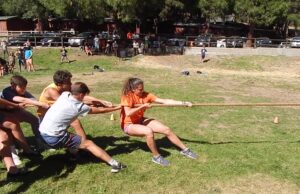
Tug of War was part of the Olympic schedule between 1900 and 1920. It was part of 5 different Summer Olympic Games. It seems such an odd thing to have a Tug-of-war…a school battle game as a serious part of such prestigious games. Nevertheless, here they were. The nation to win the most medals in Tug-of-war was Britain, having taken five medals. They were followed by the USA with three.
Tug-of-War was removed from the Olympic Program after the 1920 Games along with 33 other sports. The reason behind the removals was that the IOC decided there were too many sports and too many participants competing, so the decision was made to remove a number of sports, and unfortunately, one of those was Tug-of-War. I’m not sure why that seems sad to me, except that it had persevered up to that point, only to be pulled out of the Olympics…THE OLYMPICS!! 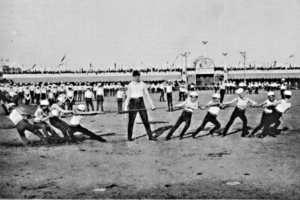 Somehow, it seems unfair. Such a big event, and to think that this sport that Tug-of-War was dropped from the Olympic program. Nevertheless, after Antwerp 1920, it was dropped. Leading up to the 1920 removal, was the 1912 Olympics when a number of countries withdrew from the Tug-of-War competition. That meant that the only match that occurred was between Great Britain and Sweden. The battle was a hard-won victory for Sweden, who eventually won after the British team sat down in the second pull, leading to their disqualification. That was the end of it. It just seems so sad to me…because at one time, it was an accepted event, a worthy battle, and now it was over.
Somehow, it seems unfair. Such a big event, and to think that this sport that Tug-of-War was dropped from the Olympic program. Nevertheless, after Antwerp 1920, it was dropped. Leading up to the 1920 removal, was the 1912 Olympics when a number of countries withdrew from the Tug-of-War competition. That meant that the only match that occurred was between Great Britain and Sweden. The battle was a hard-won victory for Sweden, who eventually won after the British team sat down in the second pull, leading to their disqualification. That was the end of it. It just seems so sad to me…because at one time, it was an accepted event, a worthy battle, and now it was over.
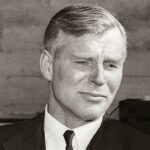
 Over the centuries, there have been many exploratory expeditions all over the world. Some were privately financed, while others were financed by groups, governments, kings and as in the case of the 1955 to 1958 expedition to Antartica, the Commonwealth of England. The Commonwealth Trans-Antarctic Expedition (CTAE) was an expedition that successfully completed the first overland crossing of Antarctica, by way of the South Pole. It was also the first expedition to reach the South Pole overland for 46 years. t was preceded only by Amundsen’s expedition and Scott’s expedition in 1911 and 1912. Antartica is a fierce, snow and ice covered, wilderness, which makes me wonder why anyone would want to be on an expedition there. Nevertheless, I suppose that it’s the adventure of it that attracts so many to attempts it.
Over the centuries, there have been many exploratory expeditions all over the world. Some were privately financed, while others were financed by groups, governments, kings and as in the case of the 1955 to 1958 expedition to Antartica, the Commonwealth of England. The Commonwealth Trans-Antarctic Expedition (CTAE) was an expedition that successfully completed the first overland crossing of Antarctica, by way of the South Pole. It was also the first expedition to reach the South Pole overland for 46 years. t was preceded only by Amundsen’s expedition and Scott’s expedition in 1911 and 1912. Antartica is a fierce, snow and ice covered, wilderness, which makes me wonder why anyone would want to be on an expedition there. Nevertheless, I suppose that it’s the adventure of it that attracts so many to attempts it.
Traditionally, polar expeditions of the Heroic Age of Antarctic Exploration were private ventures, and the CTAE was no exception, even though it was supported by the governments of the United Kingdom, New Zealand, United States, Australia and South Africa, as well as many corporate and individual donations, under the patronage of Queen Elizabeth II. The expedition was headed by British explorer Vivian Fuchs and included New Zealander Sir Edmund Hillary. The group from New Zealand included scientists who were participating in International Geophysical Year research while the British team were separately based at Halley Bay.
Fuchs took the Danish Polar vessel, Magga Dan and went for additional supplied, returning in December 1956. The southern summer of 1956–1957 was spent consolidating Shackleton Base and establishing the smaller South Ice Base, located about 300 miles inland to the south. The winter of 1957 found Fuchs at Shackleton Base. Then, finally, he set out on the transcontinental journey in November 1957. The twelve-man team traveled in six vehicles, three Sno-Cats, two Weasel tractors, and one specially adapted Muskeg tractor. While they traveled, the team was also tasked with carrying out scientific research including seismic soundings and  gravimetric readings. This was, after all a scientific expedition.
gravimetric readings. This was, after all a scientific expedition.
Hillary’s team began setting up Scott Base. This was going to be the final destination for Fuchs. It was located on the opposite side of the continent at McMurdo Sound on the Ross Sea. Using three converted Ferguson TE20 tractors and one Weasel, which had to be abandoned part-way, Hillary and his three men…Ron Balham, Peter Mulgrew, and Murray Ellis…were responsible for route-finding and laying a line of supply depots up the Skelton Glacier and across the Polar Plateau on towards the South Pole, for the use of Fuchs on the final leg of his journey. The remaining member of Hillary’s team carried out geological surveys around the Ross Sea and Victoria Land areas. The Hillary team was not originally supposed to travel as far as the South Pole, but when the supply depots were completed, Hillary saw the opportunity to beat the British and continued south, thereby reaching the Pole…where the US Amundsen–Scott South Pole Station had recently been established by air, on January 3, 1958. While he wasn’t supposed to go, Hillary’s party became the third team to reach the South Pole, preceded by Roald Amundsen in 1911 and Robert Falcon Scott in 1912. Hillary’s arrival also marked the first time that land vehicles had ever reached the Pole. It was a great historic moment.
Fuchs’ team finally reached the Pole from the opposite direction on January 19, 1958, where they met up with Hillary. From there, Fuchs continued overland, following the route that Hillary had forged to get to the South Pole. Then, Hillary flew back to Scott Base in a US plane. He would later rejoin Fuchs by plane for part of the remaining overland journey. The original overland party finally arrived at Scott Base on March 2, 1958, after having completed the historic crossing of 2,158 miles of previously unexplored snow and ice in 99 days. A few days later the expedition members left Antarctica on the on the New Zealand naval ship Endeavour, headed for New Zealand, with Captain Harry Kirkwood at the helm.
Although large quantities of supplies were hauled overland, many forms of resources were used in the expedition. Both parties were also equipped with light aircraft and made extensive use of air support for reconnaissance and supplies. US personnel working in Antartica at the time provided additional logistical help. Both parties also used dog teams for fieldwork trips and backup in case of failure of the mechanical transportation. The dogs were not taken all the way to the Pole. In December 1957 four men from the 
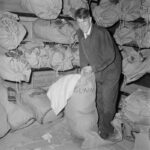 expedition flew one of the planes…a de Havilland Canada DHC-3 Otter—on an 11-hour, 1,430-mile, non-stop trans-polar flight across the Antarctic continent from Shackleton Base by way of the Pole to Scott Base, following roughly by air the same route as Fuchs’ overland party. For his accomplishments, Fuchs was knighted. The second overland crossing of the continent did not occur until 1981, during the Transglobe Expedition led by Ranulph Fiennes.
expedition flew one of the planes…a de Havilland Canada DHC-3 Otter—on an 11-hour, 1,430-mile, non-stop trans-polar flight across the Antarctic continent from Shackleton Base by way of the Pole to Scott Base, following roughly by air the same route as Fuchs’ overland party. For his accomplishments, Fuchs was knighted. The second overland crossing of the continent did not occur until 1981, during the Transglobe Expedition led by Ranulph Fiennes.

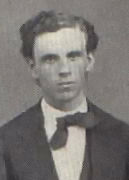 There are wars between nations, and then there are wars between gangs. The Lincoln County War of 1878 was the latter. The war started when John Tunstall was murdered. John Tunstall’s murder was really the culmination of the ongoing conflict between two factions who were competing for profits from dry goods and cattle interests in the county. James Dolan dominated the older and more established faction, operating a dry goods monopoly through general store referred to locally as The House. The other faction was run by English-born John Tunstall and his business partner Alexander McSween, who opened a competing store in 1876, with backing from established cattleman John Chisum. The Tunstall-McSween faction gathered lawmen, businessmen, Tunstall’s ranch hands, and criminal gangs to their assistance. The Dolan faction was allied with Lincoln County Sheriff Brady and aided by the Jesse Evans Gang. The Tunstall-McSween faction organized a posse of armed men, known as the Lincoln County Regulators, and had their own lawmen consisting of town constable Richard M Brewer and Deputy US Marshal Robert A Widenmann.
There are wars between nations, and then there are wars between gangs. The Lincoln County War of 1878 was the latter. The war started when John Tunstall was murdered. John Tunstall’s murder was really the culmination of the ongoing conflict between two factions who were competing for profits from dry goods and cattle interests in the county. James Dolan dominated the older and more established faction, operating a dry goods monopoly through general store referred to locally as The House. The other faction was run by English-born John Tunstall and his business partner Alexander McSween, who opened a competing store in 1876, with backing from established cattleman John Chisum. The Tunstall-McSween faction gathered lawmen, businessmen, Tunstall’s ranch hands, and criminal gangs to their assistance. The Dolan faction was allied with Lincoln County Sheriff Brady and aided by the Jesse Evans Gang. The Tunstall-McSween faction organized a posse of armed men, known as the Lincoln County Regulators, and had their own lawmen consisting of town constable Richard M Brewer and Deputy US Marshal Robert A Widenmann.
The highly volatile situation came to a head on April 4, 1878, in what became known as The Gunfight at Blazer’s Mill. The shootout was between the Lincoln County Regulators and buffalo hunter Buckshot Roberts. The Regulators, led by Richard “Dick” Brewer, included Billy the Kid and Charlie Bowdre. They began the process of hunting down anyone believed to have been associated with the murder of John Tunstall, which had initially sparked the Lincoln County War. Still, the conflict had been long in the making. Roberts had already been implicated in crimes associated with the “Murphy-Dolan” faction. Nevertheless, the reality is that he probably had nothing to do with the ongoing range war.
Blazer’s Mill located on a hillside between Lincoln, New Mexico and Tularosa, was owned by a dentist named Dr Joseph H Blazer. It was more than just a mill. The property included a large two-story house, a large square office building, a sawmill, a grist mill, several one-story adobe structures and houses, a post office, a general store, and a number of corrals and barns. I suppose it was rather a local hang out. The Regulators had killed Sheriff Brady and Deputy Hindman three days earlier, and they were in Blazer’s Mill to have a good meal at Mrs Godfrey’s Restaurant. The Regulators, who were there that day included Brewer, Bowdre, William McCarty (aka Billy the Kid), Doc Scurlock, Frank McNab, George Coe, Frank Coe, John Middleton, Jim French, Henry Newton Brown, Fred Waite, and several others who were not as well-known.
Not everyone was ready for this war. In fact, Buckshot Roberts wanted no part of the Lincoln County War. He had even made plans to leave the area. He sold his ranch and was just waiting for the check from his buyer. On April 4th, 1878, Roberts rode his mule into Blazer’s Mills. He was there to collect his check, but he was shocked to discover that the Regulators entire upper echelon was there, eating lunch in a nearby building. After killing Sheriff Brady just three days earlier the men had left the area around Lincoln, New Mexico after killing Sheriff Brady just three days earlier, but had brazenly stopped to have dinner at Mrs Godfrey’s Restaurant, before leaving the area. One of the Regulators…Frank Coe, was sitting with “Buckshot” Roberts on the steps of the main house. Coe was trying to talk Roberts into turning himself in. Roberts refused. He figured that if he turned himself in, he would be killed by the cowboys, out for revenge.
Meanwhile, Regulator chief, Dick Brewer was growing very impatient with the stand-off, so he He had given him a chance to surrender, and now he was done waiting. When Roberts saw the armed cowboys coming for him, he jumped up with his Winchester ready to fire. Roberts and Charlie Bowdre fired at the same time. Bowdre hit Roberts in the stomach and Roberts’ shot hit Bowdre’s belt buckle, actually severing his gun belt and knocking the wind from him. Roberts was seriously wounded but kept pumping bullets at the Regulators as he headed to the doorway. In the shootout, John Middleton was seriously wounded in the chest. Doc Scurlock was grazed by one slug and another struck George Coe in the right hand, costing him his trigger finger. Finally, when Roberts’ rifle clicked, Billy the Kid knew it was empty, so he ran from cover to finish off the Roberts, but instead, he was knocked senseless by the barrel of Roberts’ Winchester.
By this time, Roberts was desperate, so he barricaded himself in the house. He ignored both his painful wound and the Regulators’ repeated gunshots, armed himself with a single-shot .50-70 Government Springfield rifle belonging to Blazer, thought to be a Sharps rifle which belonged to Dr Appel and readied himself for the next round. The Regulators were stunned by everything that had taken place. They didn’t expect this turn of events, 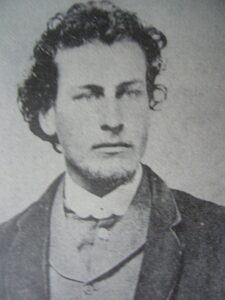
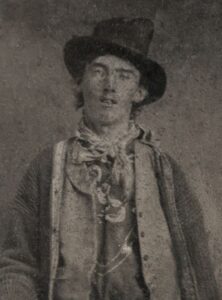 and they could only tend to their wounded and keep trying to get Roberts to come out. Nevertheless, none of them dared to approach their enemy’s fortress. Finally, Brewer circled around the main house, and took cover behind some stacked logs and opened fire on the room where the wounded man was laying on a mattress in front of the barricaded doorway. Roberts saw a cloud of gun smoke from the log pile. He opened fire when Brewer put his head up again, striking the cowboy in the eye. The Regulators, finally admitted defeat, pulled out, and left the area. Buckshot Roberts died from his wounds the next day. In the end, Roberts and Dick Brewer were buried side by side near the big house where the gunfight occurred. George W Coe, who survived the Blazer’s Mill fight, died in 1934.
and they could only tend to their wounded and keep trying to get Roberts to come out. Nevertheless, none of them dared to approach their enemy’s fortress. Finally, Brewer circled around the main house, and took cover behind some stacked logs and opened fire on the room where the wounded man was laying on a mattress in front of the barricaded doorway. Roberts saw a cloud of gun smoke from the log pile. He opened fire when Brewer put his head up again, striking the cowboy in the eye. The Regulators, finally admitted defeat, pulled out, and left the area. Buckshot Roberts died from his wounds the next day. In the end, Roberts and Dick Brewer were buried side by side near the big house where the gunfight occurred. George W Coe, who survived the Blazer’s Mill fight, died in 1934.
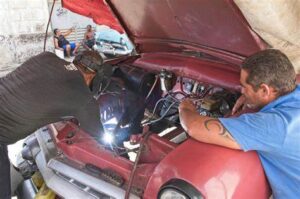
 Cars are an important part of life these days, and really for many years now. So, what would you do if your ability to buy a car suddenly stopped…like hitting a wall? My guess is that you would start taking really good care of the car you had, because you wouldn’t know how long it would be before you could buy another car. Following the Cuban Revolution in 1959, Fidel Castro imposed a ban on the import of cars from abroad. This made it almost impossible for Cubans to get their hands on new cars, meaning that if they wanted a car, they had to make do and mend the vehicles that were already on the island. Basically, the Cuban people became a nation of mechanics. It was a necessity if they wanted to have a car.
Cars are an important part of life these days, and really for many years now. So, what would you do if your ability to buy a car suddenly stopped…like hitting a wall? My guess is that you would start taking really good care of the car you had, because you wouldn’t know how long it would be before you could buy another car. Following the Cuban Revolution in 1959, Fidel Castro imposed a ban on the import of cars from abroad. This made it almost impossible for Cubans to get their hands on new cars, meaning that if they wanted a car, they had to make do and mend the vehicles that were already on the island. Basically, the Cuban people became a nation of mechanics. It was a necessity if they wanted to have a car.
In a way I find it almost strange that Castro didn’t take away the cars they had, but I guess he wasn’t concerned about them driving, just that he didn’t want any imports from the United States. The problem was 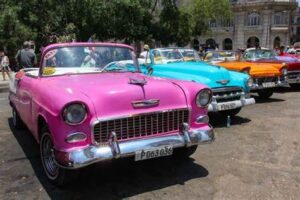
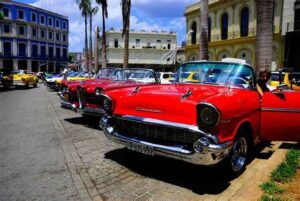 that there are no car manufacturers in Cuba, so the only way to buy a car was to import it. Of course, Castro and any of his chosen people could still import vehicles, just not from the United States. These kinds of things happen between governments, and as usual, it’s the people who suffer, not the government. In this case, I’m not so sure that “suffer” is the right word. Cuba has a huge collection of classic cars, because the people became, not only great mechanics, but they also became experts at restoring and caring for classic cars.
that there are no car manufacturers in Cuba, so the only way to buy a car was to import it. Of course, Castro and any of his chosen people could still import vehicles, just not from the United States. These kinds of things happen between governments, and as usual, it’s the people who suffer, not the government. In this case, I’m not so sure that “suffer” is the right word. Cuba has a huge collection of classic cars, because the people became, not only great mechanics, but they also became experts at restoring and caring for classic cars.
In 2014, after 55 years of not being able to, Cubans these days, are free to import foreign cars again. Unfortunately, the cost is so high that it makes imports impossible for all but the wealthiest members of society. Now you will see some newer cars on the roads, but they tend to be owned by taxi companies or car hire firms. 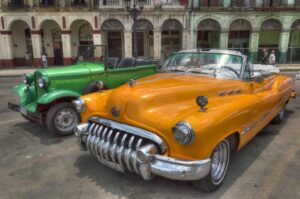
 The general population continues to drive to the old classics that they have driven for the last 55 years. While the cars in Cuba are all old, they do have value. All classic cars do, but those that are as well preserved as the ones in Cuba, might just have more value than their owners really know about…on the open market anyway. Whether they will ever be placed on the open market or not is a different story.
The general population continues to drive to the old classics that they have driven for the last 55 years. While the cars in Cuba are all old, they do have value. All classic cars do, but those that are as well preserved as the ones in Cuba, might just have more value than their owners really know about…on the open market anyway. Whether they will ever be placed on the open market or not is a different story.
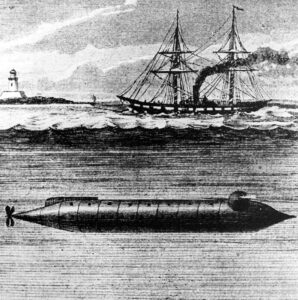 I am of the opinion that most of the United States is populated by good people, who are trying to lead decent and respectful lives. I’m sure there are those who would disagree, and when faced with evil doers, it is sometimes hard to see the good because of the bad, but I think we can agree that the people who agreed with the northern states during the Civil War, far outnumbered those who agreed with the southern states. the Union had a distinctive advantage over the Confederates. There were more states and more soldiers in the Union Army. So, the Confederate Army had to find a way to get ahead of their enemies. Confederates sometimes relied on technical innovation to aid their cause, in the face of such limited resources compared with the Union Army’s sheer numbers and resources. The Union had $234,000,000 in bank deposit and coined money while the Confederacy had $74,000,000 and the Border States had $29,000,000. The Union Army had 2,672,341 soldiers, as opposed to the Confederate Army, which had between 750,000 to 1,227,890 soldiers.
I am of the opinion that most of the United States is populated by good people, who are trying to lead decent and respectful lives. I’m sure there are those who would disagree, and when faced with evil doers, it is sometimes hard to see the good because of the bad, but I think we can agree that the people who agreed with the northern states during the Civil War, far outnumbered those who agreed with the southern states. the Union had a distinctive advantage over the Confederates. There were more states and more soldiers in the Union Army. So, the Confederate Army had to find a way to get ahead of their enemies. Confederates sometimes relied on technical innovation to aid their cause, in the face of such limited resources compared with the Union Army’s sheer numbers and resources. The Union had $234,000,000 in bank deposit and coined money while the Confederacy had $74,000,000 and the Border States had $29,000,000. The Union Army had 2,672,341 soldiers, as opposed to the Confederate Army, which had between 750,000 to 1,227,890 soldiers.
Given the obvious lop-sidedness, especially in the naval conflict, the Confederates could not hope to match the Union in sheer tonnage of ships produced. They didn’t have the funds or the resources to build as many ships as the Union. Many people would actually assume that either the Confederates would lose the war quickly, or it would be mostly fought on land. The Confederates, however, did come up with two famous Confederate naval  innovations…the ironclad warship, CSS Virginia and the submarine, HL Hunley. The HL Hunley was built in 1863. Who would have thought there would be a submarine built that early on.
innovations…the ironclad warship, CSS Virginia and the submarine, HL Hunley. The HL Hunley was built in 1863. Who would have thought there would be a submarine built that early on.
Of course, the Union wasn’t sitting around doing nothing while the Confederates dominated the water. They were busy too. The USS Monitor was built around the same time the Virginia was being retrofitted with iron plating, and those two ships actually clashed at the Battle of Hampton Roads. While the Confederates did get in the war ship game, the superior Northern industrial capacity allowed them to build more than 80 ironclads. The North also built a submarine, called the USS Alligator. It was designed by French engineer Brutus de Villeroi, who had, amazingly, been working on submersible craft for some 30 years. Contrary to what we might think, the concept of a submarine was not a new one. In fact, there was even a primitive one employed in the American War of Independence. The submarines were a far cry from the huge 20th-century submarines of today.
The Alligator was based on an 1859 prototype and was commissioned in 1861 as part of the same flurry of  naval innovation that saw the creation of the ironclad Monitor. The Alligator featured an innovative air-purification system that used limewater to remove carbon dioxide and keep the air breathable for long periods. The Alligator was manned by a 16-member crew, which was later reduced to eight. Also unusual is the fact that USS Alligator had oars to maneuver with. I suppose that wouldn’t seem unusual in its day, but it certainly does today. Sent out on a mission to remove obstructions in Charleston Harbor in advance of an attack by a Union ironclad fleet, the Alligator ran into trouble in the form of a gale on April 2, 1863, while being towed to nearby Port Royal, South Carolina. It was in the storm, and its wreckage was never recovered…but the hunt is ongoing.
naval innovation that saw the creation of the ironclad Monitor. The Alligator featured an innovative air-purification system that used limewater to remove carbon dioxide and keep the air breathable for long periods. The Alligator was manned by a 16-member crew, which was later reduced to eight. Also unusual is the fact that USS Alligator had oars to maneuver with. I suppose that wouldn’t seem unusual in its day, but it certainly does today. Sent out on a mission to remove obstructions in Charleston Harbor in advance of an attack by a Union ironclad fleet, the Alligator ran into trouble in the form of a gale on April 2, 1863, while being towed to nearby Port Royal, South Carolina. It was in the storm, and its wreckage was never recovered…but the hunt is ongoing.

 With so many “normal” days, it’s nice, every once in a while, to have a day to be funny. April Fools’ Day is known for several things. Some people think of it as a day to point out the stupidity of other people, but I think that the pranks that go along with April Fools’ Day are just a great way to make people laugh…and let’s face it…we all need to laugh more. Sometimes we get so tied up in our busy little world, trying to get everything done that we need to get done in our busy day. To take a day “off” to be silly, seems so odd, and yet we can’t help ourselves. Pulling a prank is just so hard to resist.
With so many “normal” days, it’s nice, every once in a while, to have a day to be funny. April Fools’ Day is known for several things. Some people think of it as a day to point out the stupidity of other people, but I think that the pranks that go along with April Fools’ Day are just a great way to make people laugh…and let’s face it…we all need to laugh more. Sometimes we get so tied up in our busy little world, trying to get everything done that we need to get done in our busy day. To take a day “off” to be silly, seems so odd, and yet we can’t help ourselves. Pulling a prank is just so hard to resist.
Looking back on the years of my childhood, and all the fun we had on April Fools’ Day, I actually feel blessed 
 that we had been raised with a good sense of humor. I know that lots of people get angry about a prank played on them, but when you have grown up with the ability to take a joke, you find that you enjoy a good prank…as long as it’s in good clean fun and not to specifically hurt anyone. The jokes my parents played were of that caliber. We would do things like switch the salt for the sugar, a spider in your hair, or a rip in your jeans…not that the rip in the jeans prank would do any good these days. Some people go all out, like telling someone their car was stolen or placing a rubber snake in their bed. I’m sure some pranks can be a little over the top, and can even backfire on the prankster, but most are done good naturedly, and are taken as such. And then, there is always the best part, for the prankster…yelling “April Fools” to their victim.
that we had been raised with a good sense of humor. I know that lots of people get angry about a prank played on them, but when you have grown up with the ability to take a joke, you find that you enjoy a good prank…as long as it’s in good clean fun and not to specifically hurt anyone. The jokes my parents played were of that caliber. We would do things like switch the salt for the sugar, a spider in your hair, or a rip in your jeans…not that the rip in the jeans prank would do any good these days. Some people go all out, like telling someone their car was stolen or placing a rubber snake in their bed. I’m sure some pranks can be a little over the top, and can even backfire on the prankster, but most are done good naturedly, and are taken as such. And then, there is always the best part, for the prankster…yelling “April Fools” to their victim.


Lots of April Fools’ Day pranks don’t really fool anyone, but a good natured “victim” will usually pretend that they were fooled, so the prankster isn’t “bummed out” and that’s fun too. Sometimes it’s more fun to be the victim than it is to be the prankster…well, maybe not, but it’s usually just as much fun. Happy April Fools’ Day everyone. I hope you had at least one prank played on you, and I hope you got to play one on someone else too.

 My niece, Liz Masterson is without a doubt, one of the busiest people on Earth. Liz is a Journalism and English teacher at Kelly Walsh High School in Casper, Wyoming. By definition, that puts Liz in charge of the annual, the student news site (Kelly Kall), as well as taking pictures for all of the various events that go on. From, sports to cheerleaders, and from clubs to events, Liz is there. As a photographer, she also takes many of the senior pictures for the students. Her work is excellent, and word of mouth referrals have grown her popularity exponentially. Not only does she take the pictures, but she heads up the staff that put the annual and paper together. Of course, this means long nights of going through photographs to make any edits necessary. It is a process that takes weeks and months, and all this is in addition to her normal duties as a teacher.
My niece, Liz Masterson is without a doubt, one of the busiest people on Earth. Liz is a Journalism and English teacher at Kelly Walsh High School in Casper, Wyoming. By definition, that puts Liz in charge of the annual, the student news site (Kelly Kall), as well as taking pictures for all of the various events that go on. From, sports to cheerleaders, and from clubs to events, Liz is there. As a photographer, she also takes many of the senior pictures for the students. Her work is excellent, and word of mouth referrals have grown her popularity exponentially. Not only does she take the pictures, but she heads up the staff that put the annual and paper together. Of course, this means long nights of going through photographs to make any edits necessary. It is a process that takes weeks and months, and all this is in addition to her normal duties as a teacher.
As most people know, teachers don’t get off work at 3:00pm or whatever time school gets out. They have to grade papers, grade tests, create tests, hold parent/teacher conferences, back to school nights. Often, a teacher’s day doesn’t end until 10:00pm or beyond…and that is just for the class work. Any club work or staff 
 work is extra. There is usually little time for anything of a personal life. Nevertheless, Liz is part of a book club and has set herself to the task of reading a book about each of our presidents. Liz is a Journalism and English teacher, but she is also a history buff. She has read books on the Holocaust, World War II (which her grandpa Allen Spencer, my dad, fought in), and the other wars too. She has also studied the presidents, as I said. In her “free” time, Liz spends a much time as her can with her fur babies, her dogs, Buffy, Scout, Holiday, and Gracie, as well as her cat, whose name is Piper, but she is always called Kitty.
work is extra. There is usually little time for anything of a personal life. Nevertheless, Liz is part of a book club and has set herself to the task of reading a book about each of our presidents. Liz is a Journalism and English teacher, but she is also a history buff. She has read books on the Holocaust, World War II (which her grandpa Allen Spencer, my dad, fought in), and the other wars too. She has also studied the presidents, as I said. In her “free” time, Liz spends a much time as her can with her fur babies, her dogs, Buffy, Scout, Holiday, and Gracie, as well as her cat, whose name is Piper, but she is always called Kitty.
As if that wasn’t enough, Liz is studying for her Master’s Degree. Normally this is a two-year program, but she has chosen to do it in one year…making it very intense. Part of the program required her to write a blog. She is then graded on the number of comments, and the comments themselves. The blog is called That’ll Teach You, and the articles are very good. I encourage you to read them, and please be sure to comment. It will help Liz a lot.
As if that wasn’t enough, Liz is studying for her master’s degree. This is a year-long process and very intense. 
 She is required to write a blog and she is graded on the responses both the number of comments and the comments made. The blog is called That’ll Teach You and the articles are very good. I encourage you to have a look. Be sure to comment too. It will really help her a lot. Liz is a great teacher and writer. I am so excited for her to get her master’s degree. Today Is Liz’s birthday. Happy birthday Liz!! Have a great day!! We love you!!
She is required to write a blog and she is graded on the responses both the number of comments and the comments made. The blog is called That’ll Teach You and the articles are very good. I encourage you to have a look. Be sure to comment too. It will really help her a lot. Liz is a great teacher and writer. I am so excited for her to get her master’s degree. Today Is Liz’s birthday. Happy birthday Liz!! Have a great day!! We love you!!

 Imagine knowing, all your life that you were destined to die for something you didn’t do…that you would actually be punished for a crime you did not commit. Over the years, there have been people who have had to do just that. Even the ones who have had to die, or even be incarcerated, for crimes they didn’t commit, were guilty of something. We all are. Let’s face it, we have all “sinned and come short of the Glory of God,” Romans 3:23. I’m not saying that those people who were wrongfully executed or incarcerated deserved to be there, I’m just saying that when it comes to sin, there is no such thing as innocence, except Jesus.
Imagine knowing, all your life that you were destined to die for something you didn’t do…that you would actually be punished for a crime you did not commit. Over the years, there have been people who have had to do just that. Even the ones who have had to die, or even be incarcerated, for crimes they didn’t commit, were guilty of something. We all are. Let’s face it, we have all “sinned and come short of the Glory of God,” Romans 3:23. I’m not saying that those people who were wrongfully executed or incarcerated deserved to be there, I’m just saying that when it comes to sin, there is no such thing as innocence, except Jesus.
So, when it comes right down to it, the only truly innocent person to be executed for something he didn’t do, was Jesus. The problem was that we owed a debt we couldn’t pay; Jesus paid a debt He didn’t owe; and with that, we received forgiveness we didn’t earn. All that took place on the day we now know as Good Friday, but the story didn’t end there. Unlike every other person who was executed, guilty or innocent, Jesus rose from the dead three days later. During those three days, he went to Hell and took back the “Keys of Death and Hell.” Satan no longer has power over us. We have power over him. We are not forced to live in bondage. The battle is the Lord’s, but the victory is ours…from that first Easter and for all eternity.


This is the real reason we celebrate Easter. Life as we know it would not exist if Jesus hadn’t paid that price for us. We were lost. It was all over. The wages of sin is death, and that price…death…had to be paid. So, Jesus made the ultimate sacrifice. I can’ thank Him enough…we can’t thank Him enough. How could we possibly? It will never be enough, but “all that I have is a heart singing Hallelujah!!” Thank you, Jesus!! Happy Resurrection Day everyone!!
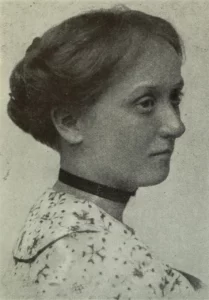
 Most people have played the game, Candy Land, but I would wager that few people know much about its origins. As a matter of fact, I wonder if other games had reasons for their creation that are vastly different than what anyone would expect. Candy Land (also known as Candyland) is a simple racing board game created by Eleanor Abbott and published by Milton Bradley in 1948. The game is suitable for young children, because it requires no reading and minimal counting skills. It also doesn’t require any strategy skills, because players are never required to make choices…simply following directions is all that is required. It seems that the game has never lost its appeal, because about one million copies are sold each year.
Most people have played the game, Candy Land, but I would wager that few people know much about its origins. As a matter of fact, I wonder if other games had reasons for their creation that are vastly different than what anyone would expect. Candy Land (also known as Candyland) is a simple racing board game created by Eleanor Abbott and published by Milton Bradley in 1948. The game is suitable for young children, because it requires no reading and minimal counting skills. It also doesn’t require any strategy skills, because players are never required to make choices…simply following directions is all that is required. It seems that the game has never lost its appeal, because about one million copies are sold each year.
For most adults, the game loses its appeal pretty early on, and we all assume that it’s because it is a game that is designed for kids. We figure that once we get a little older, we simply move on to more complicated games to find any interest in them at all. And maybe that is true, but even that idea doesn’t touch on the real “idea” behind the game.
The truth is that when she invented the game, Eleanor Abbott was recovering from polio in San Diego, California. She began to think of things that she and other recovering polio victims could do in their limited capacity. So, the game was made for and tested by the children in the same wards on the hospital. It was supposed to be a sort of occupational therapy game, but when they played it, the children suggested that Abbott submit the game to Milton Bradley Company. They knew that they enjoyed it, and thought all children would, not just those who had been ill with polio. Apparently, Milton Bradley agreed, because the bought it and first published it in 1949. It was intended to be a temporary fill-in for their, then main product line, school supplies. Surprisingly, Candy Land became Milton Bradley’s best-selling game, surpassing its previous top seller, Uncle Wiggily. It put Milton Bradley in the same league as its main competitor, Parker Brothers. It is said that 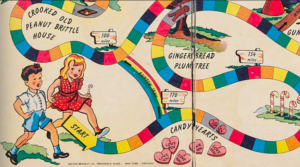
 the original art was designed by Abbott, but this is uncertain. The original purpose of the game was to give kids stuck in polio wards a way to vicariously move freely in the pursuit of delights. The original board featured a boy in a leg brace about to walk through starting gate of the game. Interesting!!
the original art was designed by Abbott, but this is uncertain. The original purpose of the game was to give kids stuck in polio wards a way to vicariously move freely in the pursuit of delights. The original board featured a boy in a leg brace about to walk through starting gate of the game. Interesting!!

